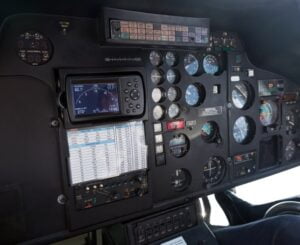In the dynamic realm of aerospace technology, adherence to standardized protocols plays a pivotal role in ensuring seamless integration, optimal performance, and regulatory compliance. Among these standards, ARINC 601 stands out as a cornerstone in the development and operation of avionics systems.
ARINC 601, established by Aeronautical Radio, Incorporated (ARINC), delineates the specifications for video systems utilized in aircraft displays. Its significance extends far beyond mere technical specifications, as it embodies a framework that fosters efficiency, reliability, and innovation within the aerospace industry.
This article delves into the compelling benefits that ARINC 601 compliance offers to both aerospace manufacturers and operators. From streamlined integration processes to enhanced performance and regulatory compliance, embracing ARINC 601 standards represents a strategic move towards excellence in avionics technology. Let’s explore why aerospace companies and operators should wholeheartedly embrace ARINC 601 standards.
Benefits of ARINC 601 in Aerospace:

Streamlined Integration:
- ARINC 601 compliance significantly simplifies the integration of avionics systems by providing clear interface requirements for video systems in aircraft displays.
- Manufacturers adhere to these standards to ensure seamless communication between components, minimizing compatibility issues and reducing complexity.
- This streamlined integration not only accelerates development but also lowers costs for manufacturers.
- Operators benefit from smoother upgrades and maintenance procedures, ensuring minimal disruptions to flight operations.
- ARINC 601’s unified standard fosters interoperability among different avionics equipment, allowing for flexible component selection without sacrificing compatibility.
Enhanced Reliability:
- In addition to streamlined integration, ARINC 601 compliance enhances the reliability of avionics systems.
- The standards mandate rigorous testing and certification processes, ensuring that components meet stringent performance requirements.
- This results in avionics displays that are robust and dependable, crucial factors in ensuring the safety and efficiency of flight operations.
Cost Savings:
- Implementing ARINC 601 standards can lead to significant cost savings for both manufacturers and operators.
- By adhering to established specifications, manufacturers can streamline their development processes, reducing time-to-market and minimizing the risk of costly errors.
- Operators benefit from lower maintenance costs and reduced downtime, as standardized components are easier to service and replace.
Improved Performance:
- ARINC 601 compliance contributes to improved performance in avionics displays. The standards specify factors such as resolution and image quality, ensuring that displays meet the high standards required for critical cockpit applications.
- This results in sharper, more detailed images, enhancing situational awareness for pilots and improving overall operational efficiency.
Regulatory Compliance:
- Meeting ARINC 601 standards is essential for regulatory compliance in the aerospace industry.
- Adherence to these standards ensures that avionics systems meet the stringent requirements set forth by aviation authorities.
- Non-compliance can lead to regulatory hurdles, certification delays, and even the grounding of aircraft, highlighting the critical importance of adhering to ARINC 601 standards for manufacturers and operators alike.
Competitive Advantage:
- Embracing ARINC 601 standards provides aerospace companies with a competitive edge in the industry.
- By adopting standardized protocols, manufacturers can demonstrate their commitment to quality, reliability, and safety, enhancing their reputation among customers and regulatory bodies.
- Moreover, adherence to ARINC 601 standards positions companies as leaders in innovation, attracting customers who prioritize cutting-edge technology and compliance with industry standards.
Case Studies:
Real-world examples demonstrate the tangible benefits of ARINC 601 compliance for aerospace manufacturers and operators. Case studies highlight successful implementations of ARINC 601 standards, showcasing how companies have achieved cost savings, enhanced reliability, and improved performance by adhering to these specifications. These examples serve as valuable insights for industry stakeholders, illustrating the practical advantages of embracing ARINC 601 standards.
Conclusion:
In conclusion, the benefits of ARINC 601 compliance for aerospace manufacturers and operators are manifold and significant. By adhering to these standards, companies can streamline integration processes, enhance reliability, achieve cost savings, and improve performance in avionics displays. Moreover, compliance with ARINC 601 standards is crucial for regulatory compliance and provides a competitive advantage in the industry.
Through case studies, we have seen how companies have successfully implemented ARINC 601 standards, realizing tangible benefits such as reduced development time, lower maintenance costs, and enhanced operational efficiency. Looking to the future, ARINC 601 standards will continue to play a pivotal role in shaping the evolution of avionics technology, ensuring compatibility and interoperability with emerging innovations.
As such, embracing ARINC 601 standards is not just a matter of compliance but also a strategic decision that positions aerospace companies and operators for long-term success in an ever-evolving industry. By prioritizing adherence to these standards, stakeholders can ensure the safety, reliability, and efficiency of aircraft operations while remaining competitive in the global market.







